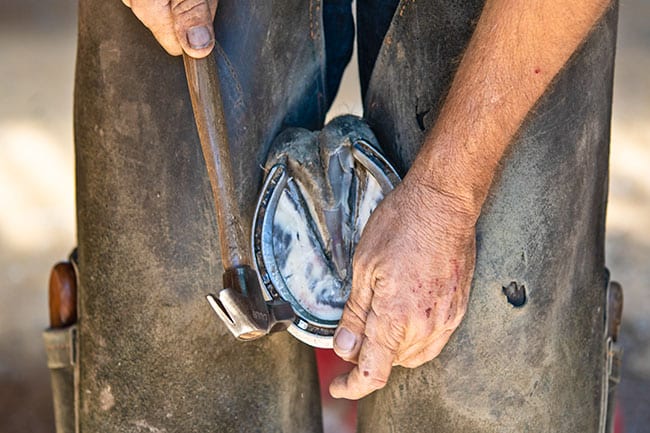
Horseshoes have been an integral part of equine care for centuries, providing protection and support to a horse’s delicate hooves. While some may perceive shoeing as a purely aesthetic practice, it plays a vital role in maintaining a horse’s overall health, comfort, and performance. Understanding the importance of horseshoes and the process involved can empower horse owners to make informed decisions about their equine companions’ hoof care.
This article delves into the multifaceted benefits of horseshoes, exploring their impact on equine health, athletic performance, and overall well-being. We will also shed light on the shoeing process, emphasizing the importance of regular hoof care practices and choosing a qualified farrier. By providing comprehensive insights, this article aims to equip horse owners with the knowledge necessary to prioritize their horses’ hoof health.
Importance of Horseshoes for Equine Health
Horseshoes serve as protective shields for hooves, safeguarding them from wear and tear caused by daily activities like walking, running, and jumping. The constant impact on hard surfaces can lead to cracks, chips, and other injuries that compromise the integrity of the hoof wall. By providing a durable outer layer, horseshoes minimize the risk of these injuries, promoting healthy hoof development and preventing lameness.
Furthermore, horseshoes help distribute weight evenly across the hoof, reducing stress on sensitive structures like tendons, ligaments, and joints. This even weight distribution is particularly crucial for horses engaged in strenuous activities or those with pre-existing hoof conditions. By alleviating pressure points and supporting proper biomechanics, horseshoes contribute to overall equine health and well-being.
Benefits of Horseshoeing for Performance
Horseshoes play a significant role in enhancing a horse’s athletic performance by providing increased traction and stability. The specially designed shape and material of the shoe grip the ground effectively, allowing for powerful strides and precise movements. This enhanced traction is particularly beneficial for disciplines like racing, jumping, and dressage, where quick acceleration, agility, and balance are paramount.
Moreover, horseshoes can be customized to address specific performance needs. For example, shoes with specialized designs or materials can improve shock absorption, reduce concussion, and enhance a horse’s ability to navigate challenging terrain. By tailoring the shoeing approach to individual requirements, farriers can optimize a horse’s performance potential and minimize the risk of injury during strenuous activities.
The Shoeing Process and Horse Adaptation
The process of do horses like to be shode involves several steps, starting with careful examination of the hooves by a qualified farrier. This assessment helps determine the appropriate shoe size, shape, and type based on the horse’s breed, activity level, and any existing hoof conditions.
Once the shoes are selected, the farrier trims the hooves to remove excess growth and create a smooth surface for the shoes to adhere to. The shoes are then nailed onto the hoof using specialized tools and techniques. Throughout the process, experienced farriers prioritize the horse’s comfort and safety by employing gentle handling methods and minimizing stress.
While some horses may initially resist being shod due to unfamiliar sensations, most adapt well with proper handling and a skilled farrier. Regular exposure to the shoeing process can help desensitize horses and make them more comfortable during subsequent appointments.
Regular Hoof Care Practices
Maintaining healthy hooves requires consistent care beyond just do horses like to be shode. Regular hoof trimming is essential for removing excess growth, preventing overgrowth that can lead to lameness or other issues. Trimming should be performed every 4-6 weeks by a qualified farrier or experienced horse owner.
In addition to trimming, regular inspection of the hooves is crucial for identifying any signs of injury, infection, or abnormalities. Checking for cracks, chips, abscesses, and changes in hoof shape can help address potential problems early on. Prompt attention to hoof health can prevent minor issues from escalating into serious conditions.
Choosing the Right Farrier
Selecting a qualified farrier is paramount for ensuring proper hoof care and promoting equine well-being. Look for a farrier who possesses relevant certifications, experience, and a strong reputation within the equestrian community.
During your initial consultation with a potential farrier, discuss your horse’s individual needs, activity level, and any existing hoof conditions. A skilled farrier will take the time to assess your horse thoroughly and develop a customized shoeing plan that addresses their specific requirements.
Conclusion
Horseshoes play a vital role in maintaining equine health, performance, and overall well-being. By providing protection, support, and traction, horseshoes contribute to healthy hoof development, reduce the risk of injury, and enhance athletic capabilities. Regular hoof care practices, including trimming and shoeing by a qualified farrier, are essential for ensuring your horse’s hooves remain strong, healthy, and capable of supporting their active lifestyle.
